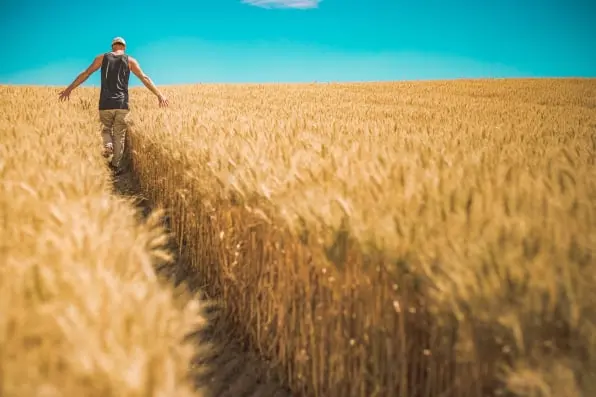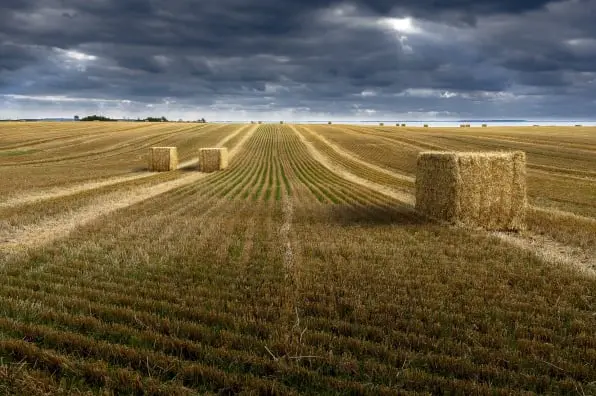Wheat grain Traceability app:
Wheat grain Traceability app for wheat grain producers, bulk grain storage, grain wholesaler import/export, wheat grain value adders: Full wheat grain Traceability solution.

Wheat grain Supplier Traceability & management
With the growing global population, the need for food is expected to grow tremendously in the next few decades. One of the key tools to address such growing food demand is minimizing grain losses and optimizing food processing operations. Hence, several research studies are underway to reduce grain losses/degradation at the farm (upon harvest) and later during the milling and baking processes. However, less attention has been paid to changes in grain quality between harvest and milling. This paper aims to address this knowledge gap and discusses possible strategies for preserving grain quality (for Canadian wheat in particular) during unit operations at primary, process, or terminal elevators. To this end, the importance of wheat flour quality metrics is briefly described, followed by a discussion on the effect of grain properties on such quality parameters. This work also explores how drying, storage, blending, and cleaning, as some of the common post-harvest unit operations, could affect grain's end-product quality. Finally, an overview of the available techniques for grain quality monitoring is provided, followed by a discussion on existing gaps and potential solutions for quality traceability throughout the wheat supply chain.
1 INTRODUCTION
Wheat is one of the most important staple food crops worldwide, grown in more than 120 countries (Wheat Production by Country, 2022). Considering the high importance of the crop around the globe, the market seeks good-quality wheat-based products. Generally, it is well known that wheat quality is affected by various factors, including physical (kernel moisture content [MC], mass and density, size, color, hardness, vitality, and damage), safety and sanitary (fungal infections, mycotoxins, insects, and foreign material), composition (protein, starch, and ash contents), and functional (viability and milling yield) (Jayas & Singh, 2012; Yasothai, 2020). Indeed, the end use determines which characteristics are of higher importance. For instance, millers, bread makers, and consumers each consider different key quality features, such as seed soundness, milling yield, flour/dough properties, and color/flavor, respectively. To fulfill the market demand, stakeholders such as producers, grain handlers, millers, and food processors deal with several hazards to grain quality and preservation both pre- and post-harvest.

Wheat grain Traceability during production
View App Specifications.
What is Grain Traceability?
Grain traceability is tracing grains/cereals and cereal-based products from seed to plate.
In a more complete definition, grain traceability means the ability to identify at any specified stage of the grain supply chain from farmer to consumer where the food products come from (one step back) and where they end up (one step forward).1
Origin
The term “traceability” has always existed in the food industry, although it has been known by other names such as logistics control or inventory management. From food safety standpoint, traceability has involved product recalls.
Historically, when a major quality/food safety defect or allergen mislabeling occurred, a company recalled the “defective” product. When the defect or contamination was found, the organization would attempt to trace back and locate the source of deficiency.
How does it work?
Traceability mechanisms and systems have become a priority, especially in the produce, grains and cereals industry. Such systems become essential to provide transparency and security to consumers who are demanding healthier and safer products with higher quality and nutritional characteristics.
Grain traceability is very important for cereal and grain growers because it ensures the quality of grains that are introduced into the food supply chain, allowing certification and accreditation of their products, and quickly locating problematic product shipments.
Application
A traceability program is essentially an information management system. Such a program should be able to identify the parties, locations, and shipments involved in the planting, harvest, transportation, transformation, processing, packaging, storage, and distribution of products. Finally, the program should record the processes that need to be validated by auditors to demonstrate compliance with food safety and food quality systems (e.g. ISO 22000, HACCP).1,2

Wheat grain Traceability & management
Sustainability
GTA has developed a Sustainability Policy and participates in industry wide forums focussing on grains industry sustainability.
Traceability
The Australian Grain Industry Code of Practice states that participants in the supply chain should have procedures in place to trace grain one step forward and onestep back in the grain supply chain.
Full traceability from field to baker is guaranteed. This allows us to offer a high quality product at all times with authentic added value.
Constant quality & authentic added value
Traceability is mostly a ground condition in identifying or reducing swiftly any issues. We mostly use it as an instrument to follow up wheat deliveries on a constant basis and to guarantee constant quality in every milling. Simultaneously, it allows us to offer added value to our products by means of authentic wheat species and/or of specific origin.
Traceability from field to baker
‘From field to baker’ : a frequently used tagline. But what does it mean to you? How do we guarantee constant quality in each flour bag?
Dossche Mills’ flour bags contain a lot reference number or batch number. This number allows us to identify the wheat out of which the flour was manufactured which we can link to the wheat deliveries.
Every farmer is certified and has a crop information sheet for each field. This sheet mentions details on the harvest date, fertilizations, any pesticides and even details on earlier crops on the same field.
Upon the wheat’s delivery by the farmer to the grain merchant, the wheat will be stored in silos containing 10,000 to 12,000 tons of wheat in average. Inflows and outflows are automatically registered allowing for the grain’s traceability up till the farmer. Also every grain merchant has been certified which enables us to guarantee high level processing.
Upon the wheat’s arrival in our mills, the wheat is registered by means of a unique refence number. In addition, any use of insecticides during the crop and storage needs to registered.
In order to guarantee our flour’s quality, a sample is taken of each delivery for further analysis in our grain lab. The analysis’ results will be the basis for further classification of the grain after which it will be stored in our silos. Continuous follow-up of the wheat enables us guarantee quality at each milling. After preparing the flour mix, each bag will have a label containing a unique lot reference number of batch code. This is how we guarantee full traceably and quality of flour in your business.

Wheat grain factory hygiene checklist
Currently, the problems of quality and safety of food products are the most important for the processing enterprises of the agro-industrial complex. Increasingly important are activities aimed at improving the quality of the life cycle processes of food products. One of the basic foods in the diet of most consumers is bread and bakery products, and the main raw material for their production is flour. Therefore, the topic under consideration of our paper is relevant.
The circulation of wheat products involves a number of different types of food-related enterprises, including planting bases, grain trading companies, warehousing enterprises, food processing plants, sales companies and so on. The centralized traceability architecture cannot meet the requirements such as transaction data security. While, the distributed traceability architecture faces the difficulty and complexity of information processing for the traceability data stored and managed by different enterprises. In order to meet the requirements imposed on distributed data management and diversity of deployment requirements, an EPC (Electronic Product Code) coding scheme is proposed, in addition, based on which we design and implement a distributed wheat products quality traceability system in this paper. The test indicates that the distributed quality traceability system can track the wheat products quality information in the whole supply chain of wheat products effectively.
Gain and oil are important compounds in global food supplies, and ensuring the quality and safety of grains and oil is a critical issue in the food supply chain security. Data traceability is the key factor in quality and safety management. Currently, it is a big challenge to ensure the reliability of data and guarantee the efficient exchange of data in various highly heterogeneous systems. To address this challenge, we develop a reliable traceability model applied to the grain and oil industry. In this paper, we first analyze the characteristics of the whole chain traceability information flow, and then we propose the concept that the connector for blockchain and industrial internet is suitable for data traceability in the grain and oil industry. Based on this concept, a reliable traceability model of grain and oil quality and safety is constructed. Finally, a reliable traceability prototype system for wheat quality and safety was designed, and the system implementation of the model was validated. The overall advantage of the proposed model is that the traceability information is safe and credible, the interaction is concise and efficient, and the security and full-process traceability of cross-chain information interaction are guaranteed. This paper fills the gap in the application of research chain network in the field of grain and oil traceability. Reference to this model can also be used to implement and adjust the traceability system, which is adaptable to stakeholders in the grain and oil industry. The model and techniques in this paper not only demonstrate value in real-world applications but also inspire further research in the field.